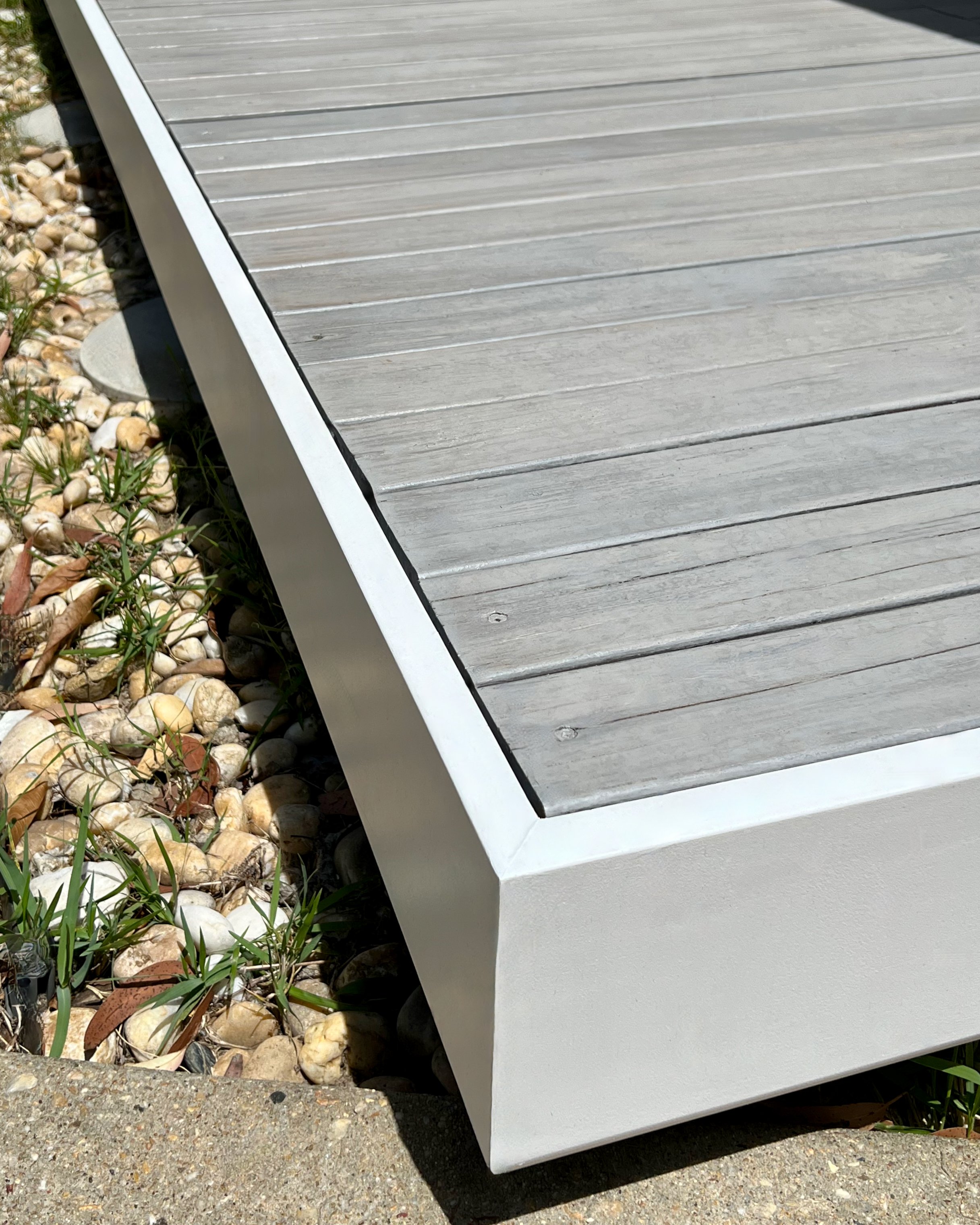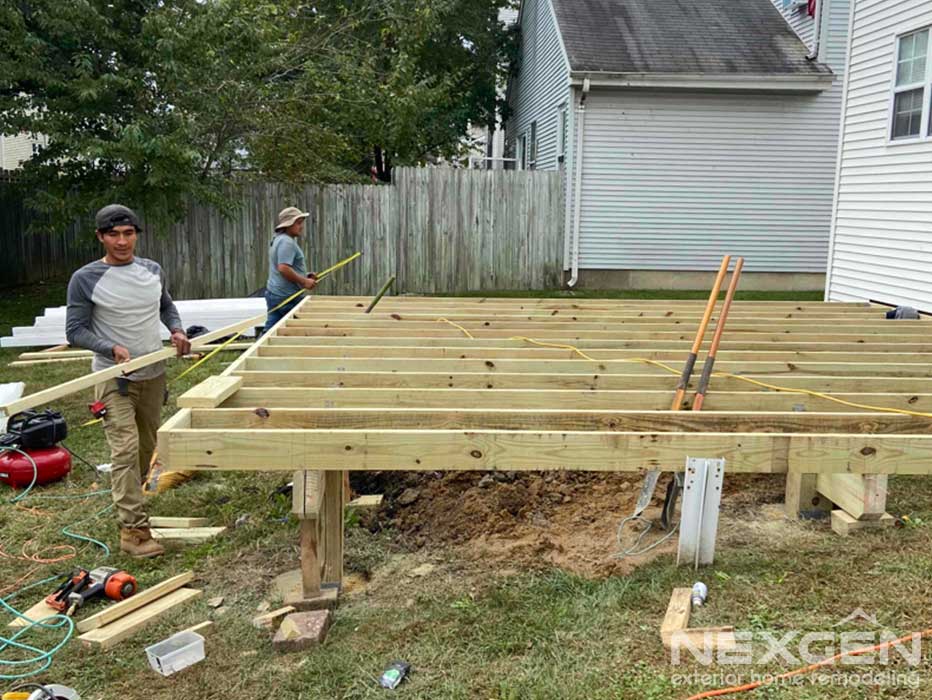A successful deck installation starts with careful planning and a trustworthy crew.
A successful deck installation starts with careful planning and a trustworthy crew.
Blog Article
Exactly how to Pick the Right Materials for Your Deck Installation Task
Choosing the ideal products for your deck setup project can seem complicated. The trick is to stabilize your budget plan, design preferences, and way of life needs to create a deck that will certainly improve your outdoor area for years to come.
Recognizing the Different Kinds Of Deck Products
When getting started on a deck installation project, the option of products comes to be a pivotal decision. Composite materials, on the other hand, are a blend of timber and plastic, giving resilience and resistance to weather aspects. By comprehending these distinctions, home owners can make a more informed decision on the most suitable deck material for their specific needs.
Assessing the Sturdiness and Upkeep Demands of Deck Products
Examining the longevity and upkeep demands of deck products is a critical action in deck installment. Longevity entails the product's capability to hold up against harsh climate condition, wear and tear, and its longevity. For example, cedar and redwood are naturally resistant to rot and insects, making them durable selections. On the various other hand, pressure-treated wood, while durable, might call for more maintenance as a result of its sensitivity to splitting and deforming.
Comprehending maintenance demands is equally vital. Some materials call for regular securing or staining to keep their appearance and stand up to moisture damages, while others, like composite decking, demand much less upkeep. By examining these elements, one can pick the most appropriate outdoor decking material, making certain a balance in between resilience, upkeep demands, and aesthetic allure.
Cost Analysis: Contrasting Timber and Composite Decking
Although expense might initially seem like a second issue, it is a considerable factor when comparing timber and composite outdoor decking. Wood, typically a more economical option, has a lower in advance expense. Nonetheless, over time, maintenance costs can collect, possibly making wood much more expensive over time. These upkeep prices might include staining, sealing, or replacing damaged boards. On the other hand, composite decking, while pricier initially, requires less maintenance, possibly reducing long-term prices. Yet, it's vital to remember that composite decking isn't invulnerable to deterioration, and replacement prices can be high. As a result, possible deck proprietors must consider their budget and desire to preserve their decks when making a decision in between timber and composite decking.
Aesthetic Appeals and Style Versatility of Decking Materials
While price is an important factor to consider, the aesthetic charm and layout versatility of outdoor decking materials likewise play a substantial role in the decision-making procedure. Various materials use differing levels of aesthetic allure. As an example, all-natural wood decking gives a classic, ageless appearance, while composite materials use a vast range of shades and textures to fit varied preferences and styles. Design adaptability refers to the ability to shape and control the outdoor decking material to satisfy details layout demands. Timber, for example, offers high design adaptability because of its simplicity of cutting and shaping. Composite materials, while much less adaptable in layout, are still versatile enough for many deck styles. These elements, as a result, are essential determinants in the choice of outdoor decking product.
Ecological Influence of Decking Products
When choosing outdoor decking materials, one must take into consideration not only aesthetic appeals and sturdiness, but likewise the environmental effect. It is necessary to analyze the sustainability of materials and discover recycled outdoor decking choices. In addition, comprehending the potential effect my response on regional ecological communities will certainly make sure a much more eco accountable choice.
Examining Product Sustainability
In the realm of deck construction, evaluating material sustainability is an essential action. This includes reviewing the ecological influence of each prospective product, taking into consideration factors such as the energy needed for its manufacturing, its carbon impact, and its end-of-life disposal or reusing options. Wood is a sustainable source, however unsustainable logging methods can lead to logging. Composite decking materials typically integrate wood and plastic, reducing the need for brand-new lumber however enhancing reliance on fossil gas. Light weight aluminum and various other metals may be more durable and recyclable, yet their removal and processing can be energy-intensive. Therefore, the selection of decking materials ought to balance functionality, aesthetic appeals, expense, and sustainability to guarantee an accountable and resilient setup.
Recycled Outdoor Decking Alternatives

Composite outdoor decking is especially popular due to its sturdiness and simplicity of maintenance. Recycled plastic outdoor decking, on the other hand, is very durable and needs marginal maintenance.

Effect On Local Environments
While the benefits of making use of recycled products for outdoor decking can not be overstated, it's similarly vital to think about the wider ecological effects of these selections. Appropriate disposal of old outdoor decking is crucial to decreasing land fill waste. Basically, an eco-conscious deck project needs careful product choice, lasting sourcing, and liable disposal.
Making Your Decision: Tips for Picking the most effective Deck Materials
As the write-up changes right into the subtopic of "Making Your Last Choice: Tips for Choosing the very best Deck Products", it is crucial to recognize the range of deck products available. Striking an equilibrium in between toughness and appearance is necessary in this choice process. The complying with see this website discussion will guide visitors in making an informed choice based on these essential considerations.
Comprehending Different Deck Materials
The task of picking the ideal materials for your deck installment can seem discouraging due to the huge range of alternatives offered. Plastic or PVC decks are also a lot more long lasting and need less maintenance than composite materials, yet they can look less natural. Aluminum decks are strong, light-weight, and resistant to rot, yet they are likewise the most pricey choice.
Resilience vs. Looks Balance
Stabilizing resilience with appearances can be a difficulty when picking deck materials. The choice frequently steams down to personal preferences and the deck's planned use. High-traffic areas might necessitate resilient products like composite outdoor decking, which endures damage but may lack the all-natural beauty of wood. On the various other hand, timber offers an ageless allure and heat that synthetic materials struggle to duplicate. It needs extra upkeep and might not last as long. Homeowners need to strike a balance, considering both the deck's useful demands and their aesthetic preferences. By doing so, they can ensure their deck remains a functional and attractive outdoor space for years to come.
Conclusion
Finally, choosing the right materials for your deck installation project calls for careful factor to consider of factors such as durability, maintenance, price, aesthetic appeals, and environmental impact. Whether you go with traditional timber or composite materials, your selection must align with your budget plan, design preferences, and way of life. Ultimately, the most effective decking material is one that improves your outdoor area and gives pleasure for many years ahead.
Report this page